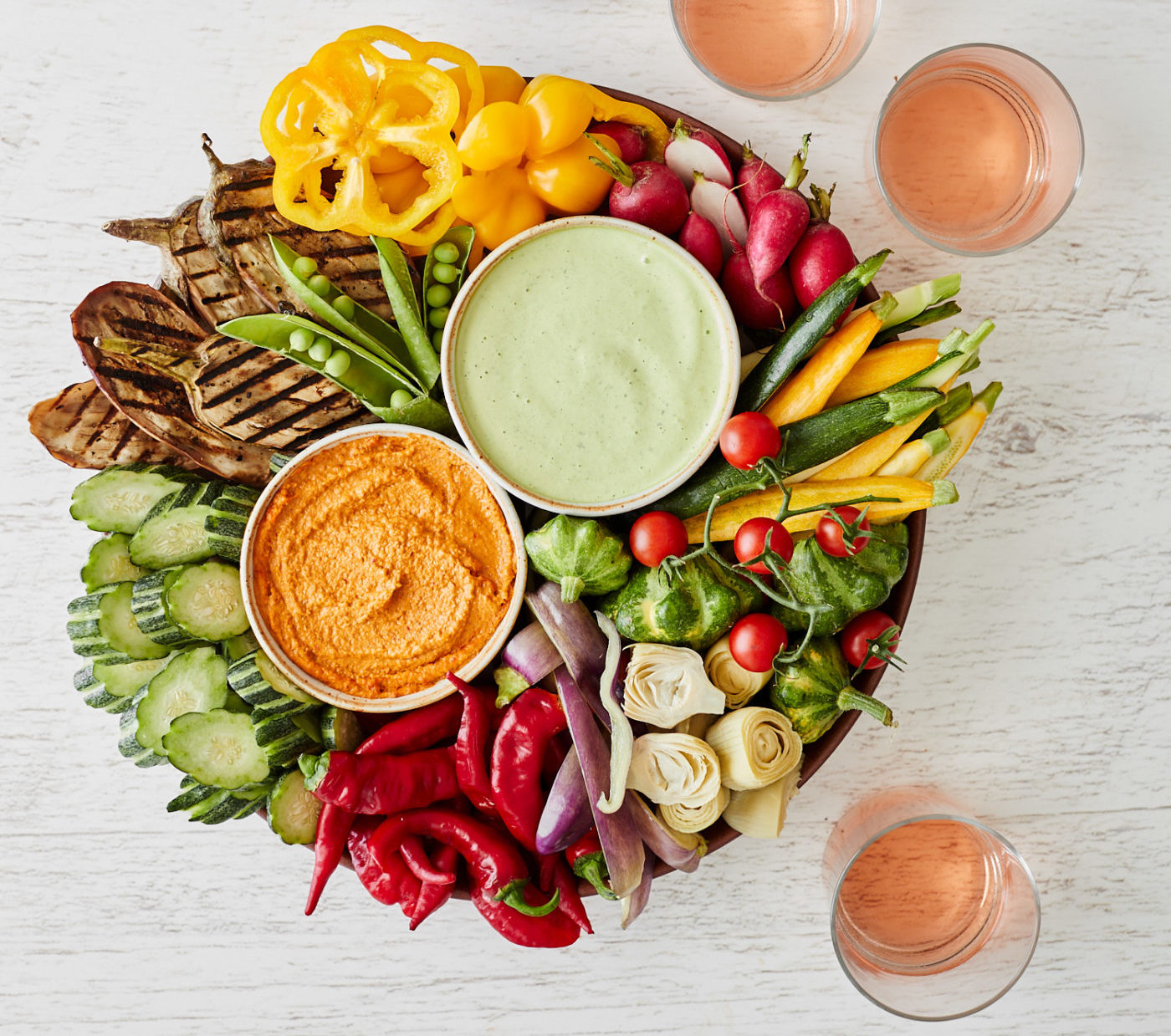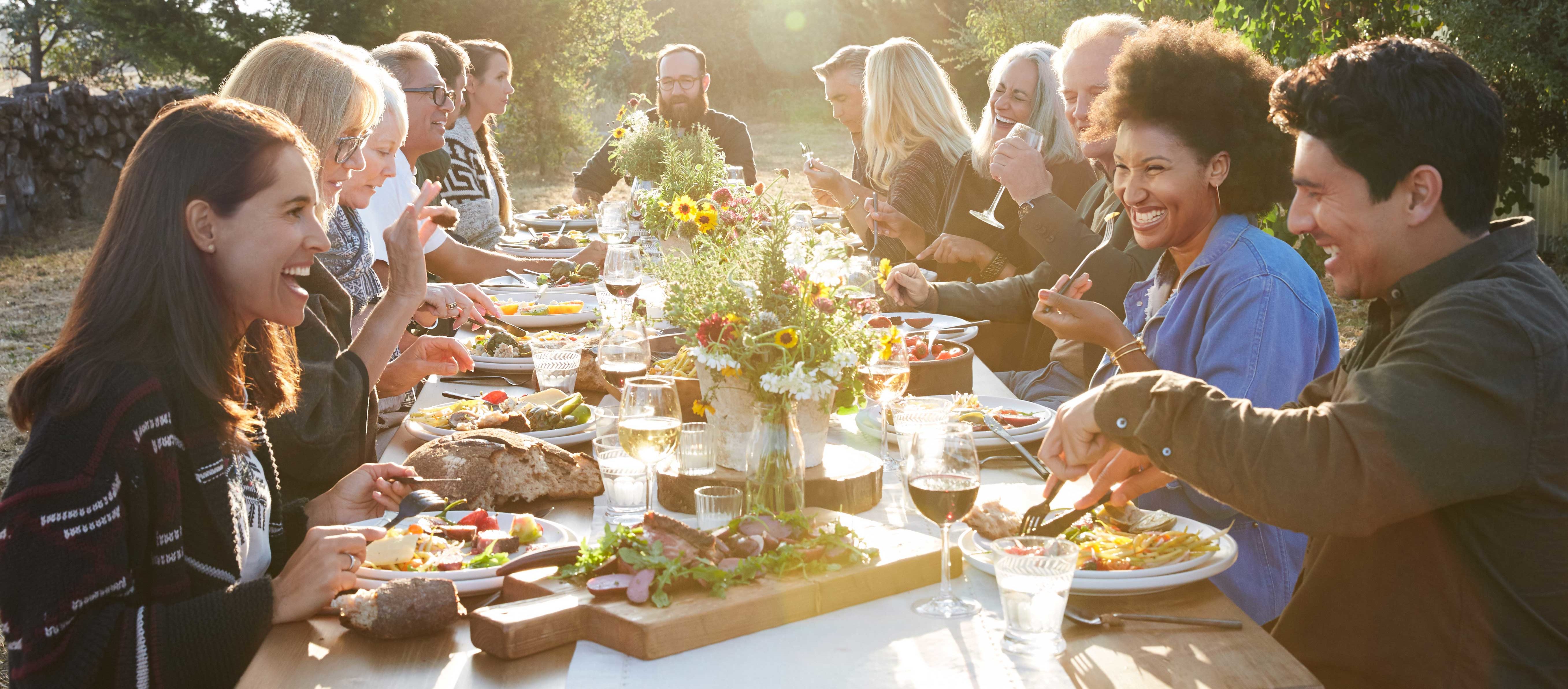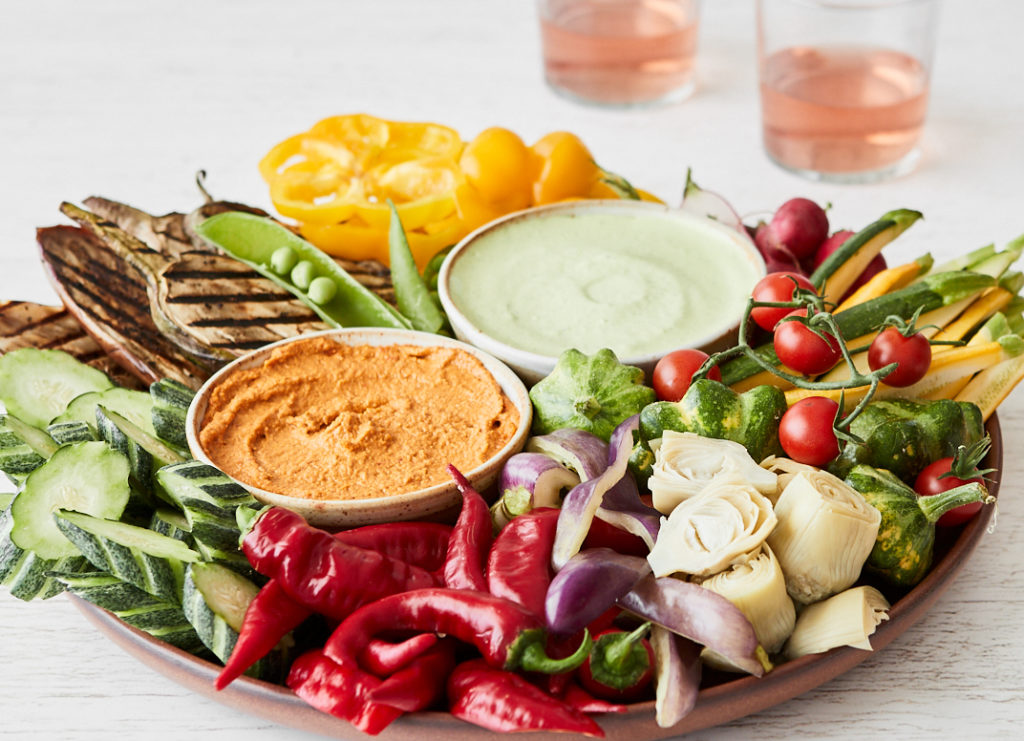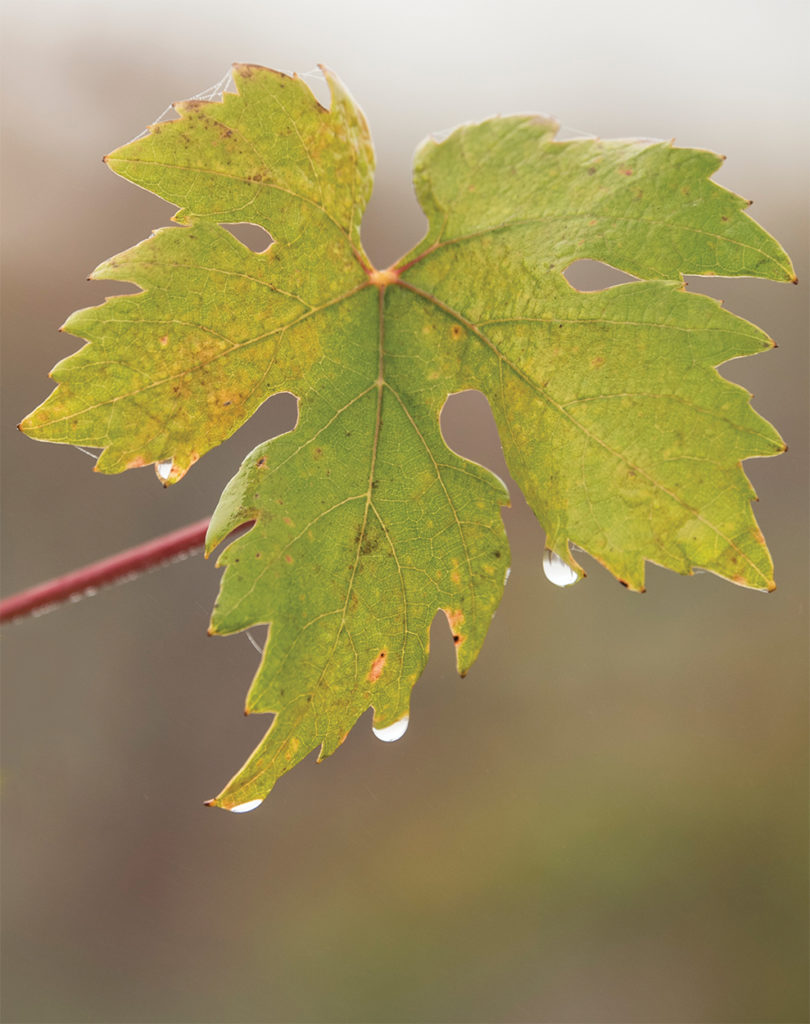The Recipe
Harvest Platter with Dueling Dips
Visit a nearby farmers market or farm stand (or your own garden) to find the season’s best produce for your platter. Think about contrasting color, texture and shape as you assemble your masterpiece.
Wine suggestion: California Rosé or California Sauvignon Blanc

Ingredients
Green Goddess Dip
- ¾ cup (175 g) mayonnaise
- ¼ cup (60 g) sour cream
- 3 anchovy fillets
- ¼ cup (10 g) sliced fresh chives
- ¼ cup (10 g) minced flat-leaf parsley
- 1 tablespoon chopped fresh tarragon
- 2 teaspoons lemon juice
- 1 large clove garlic, sliced
- Kosher or sea salt
- White wine vinegar
Roasted Red Pepper, Walnut, and Pomegranate Dip
- 1 large red bell pepper, 8 to 10 ounces (215 to 275 g)
- 1/3 cup (15 g) soft fresh breadcrumbs
- 1/3 cup (35 g) lightly toasted and coarsely chopped walnuts, plus more for garnish
- 1 large clove garlic, sliced
- 1 tablespoon extra-virgin olive oil
- 2 teaspoons pomegranate molasses, plus more for garnish
- 1 teaspoon fresh lemon juice
- Scant ½ teaspoon toasted cumin seed, pounded fine or ground cumin
- ½ teaspoon Aleppo or Maras chili, hot paprika, or other medium-hot ground red chili
- Kosher or sea salt
- Parsley or cilantro leaves for garnish
Directions
Green Goddess Dip:
In a blender, combine the mayonnaise, sour cream, anchovies, chives, parsley, tarragon, lemon juice and garlic. Blend until completely smooth and green. Transfer to a bowl and season with salt. Taste and add a splash of wine vinegar if the dressing needs more acidity.
Makes about 1 cup (.25 l)
Roasted Red Pepper, Walnut, and Pomegranate Dip (Muhammara)
Preheat a broiler and position a rack about 6 inches (15 cm) from the element. Broil the bell pepper on a baking sheet until blackened on all sides. Set aside until cool enough to handle, then discard the skin and seeds. Pat the roasted pepper dry on paper towels.
Put the roasted pepper, breadcrumbs, walnuts, garlic, olive oil, pomegranate molasses, lemon juice, cumin and chili in a food processor and blend until smooth. Add salt to taste and blend again. Taste and adjust the sweet-tart balance to your liking with more pomegranate molasses or lemon juice.
Spoon the dip into a bowl and garnish with a drizzle of pomegranate molasses, a few chopped walnuts and parsley or cilantro leaves.
Makes about ¾ cup (175 ml)







